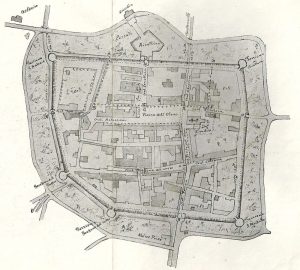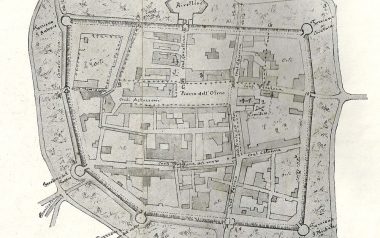Fortress of Castel Goffredo
Fortress of Castel Goffredo is formed by two fortification lines built in later times and strengthened by the Gonzagas in the fifteenth century.
Fortress of Castel Goffredo:the first fortified line developed within what was the Roman city, the castrum, between the tenth and eleventh centuries and inside it developed the first inhabited center that took the name of Castellum vetus or Castelvecchio. Gianfranco Gonzaga, lord of Mantua, has it restored in 1430; of this first fortification there are no more present the castle and the Porta di Sopra with the Rivellino, while the Civic Tower, the vicar’s palace and the Torrazzo have been preserved, some parts of the old walls are those of the garden of Palazzo Gonzaga- Acerbi. The second fortified wall was built by Alessandro Gonzaga in the fifteenth century, including the part of the village that had remained outside the first city wall; in addition to the walls, the ravelin was built in front of the north gate, dug a ditch all around with the water of the Fuga and Tartarello torrents, a ring road; in 1480 Ludovico Gonzaga commissioned the architect Giovanni da Padova to enhance the second line. At the beginning of the 16th century the seven circular towers were added and in 1540 Aloisio Gonzaga strengthened both the walls and the access doors.The damage caused by subsequent wars means that after the marquisate of Alfonso Gonzaga the walls are no longer repaired with the consequent decay of the same. From the mid-eighteenth century begins a slow demolition of the walls that ends with 1920; are preserved: partially the Torrione di Sant’Antonio, some tracts of the moat, a part of the Torrione dei Disciplini, the two pillars of the Porta Picaloca on via Mantova.


